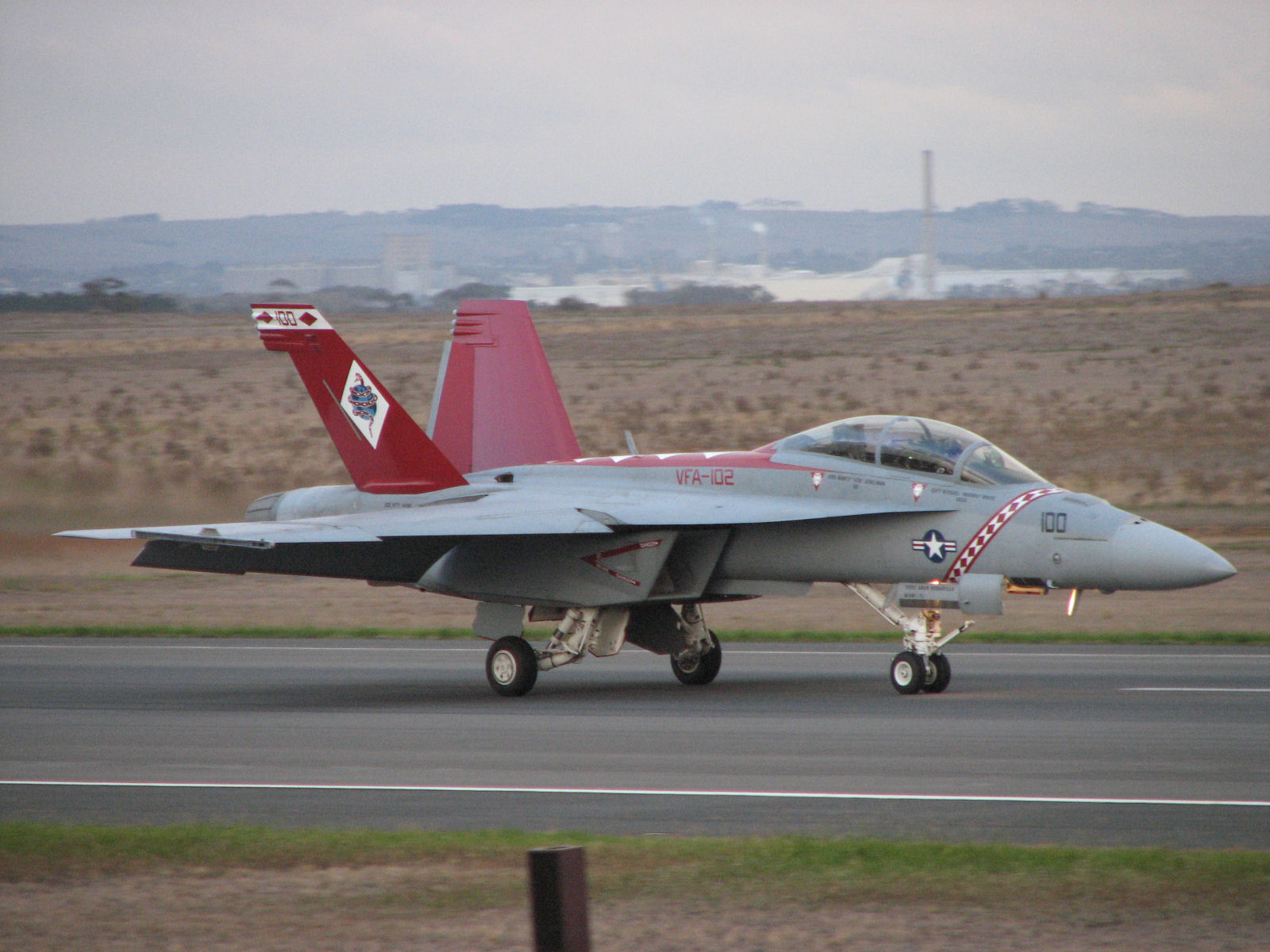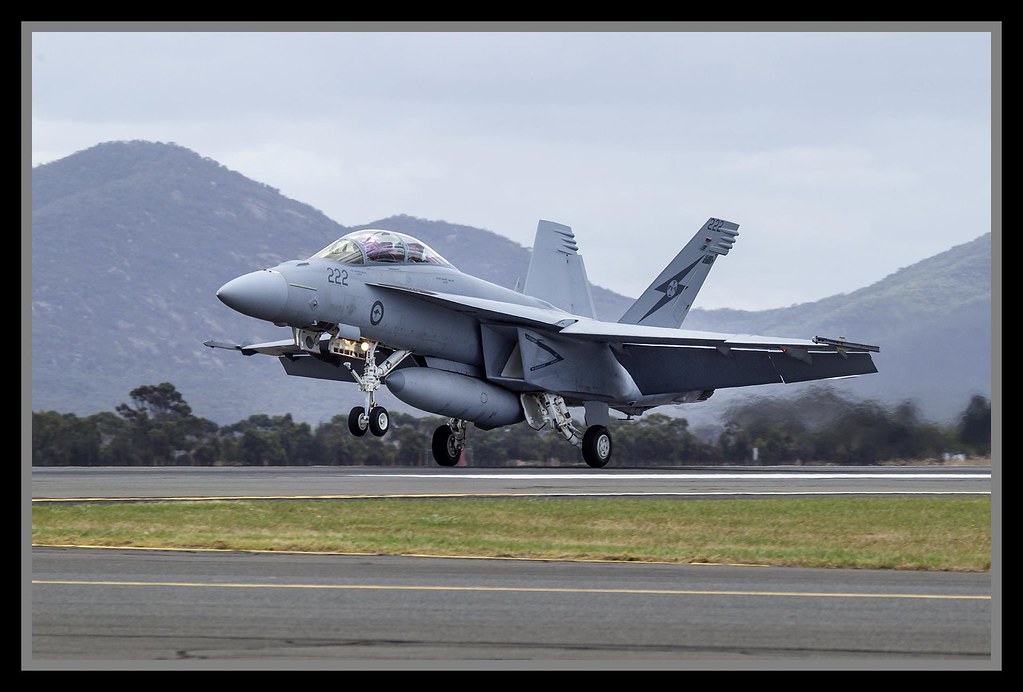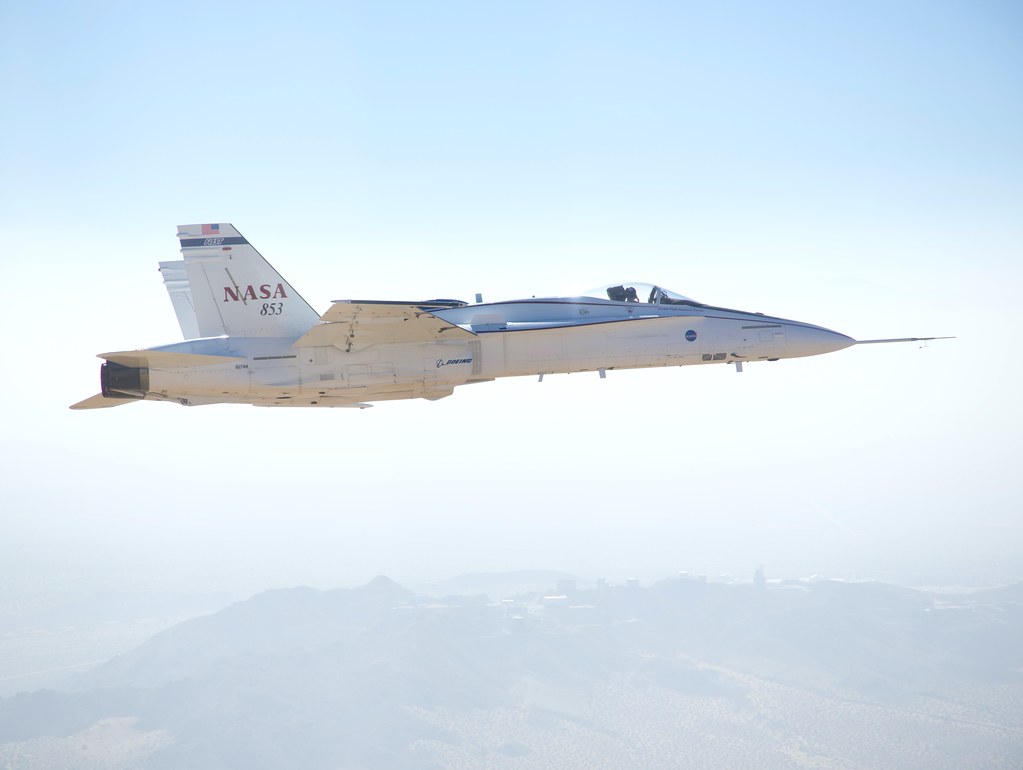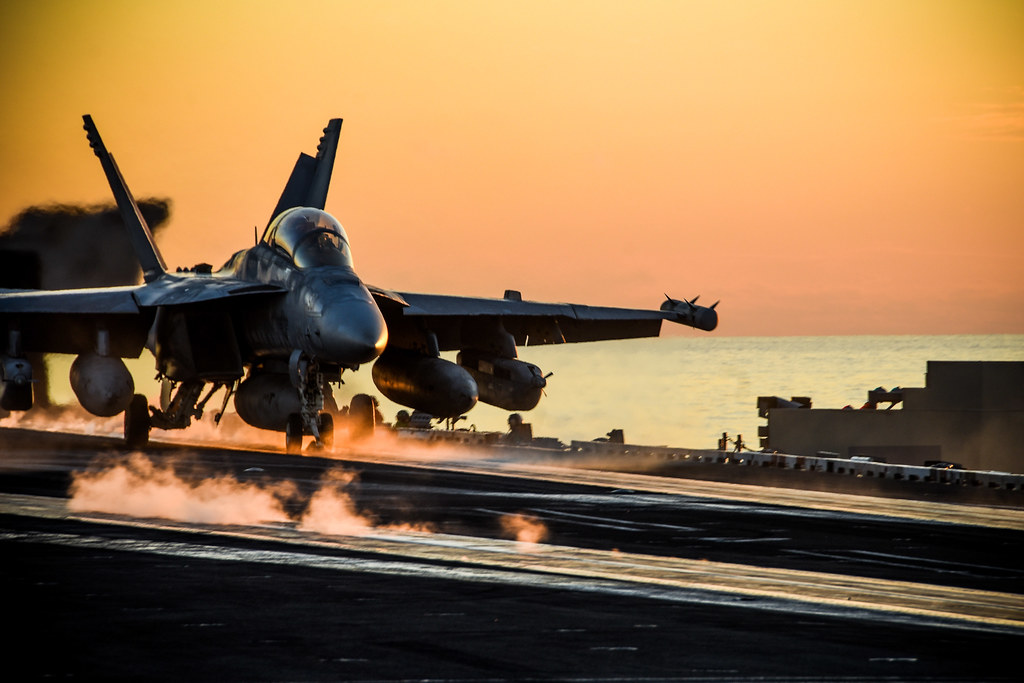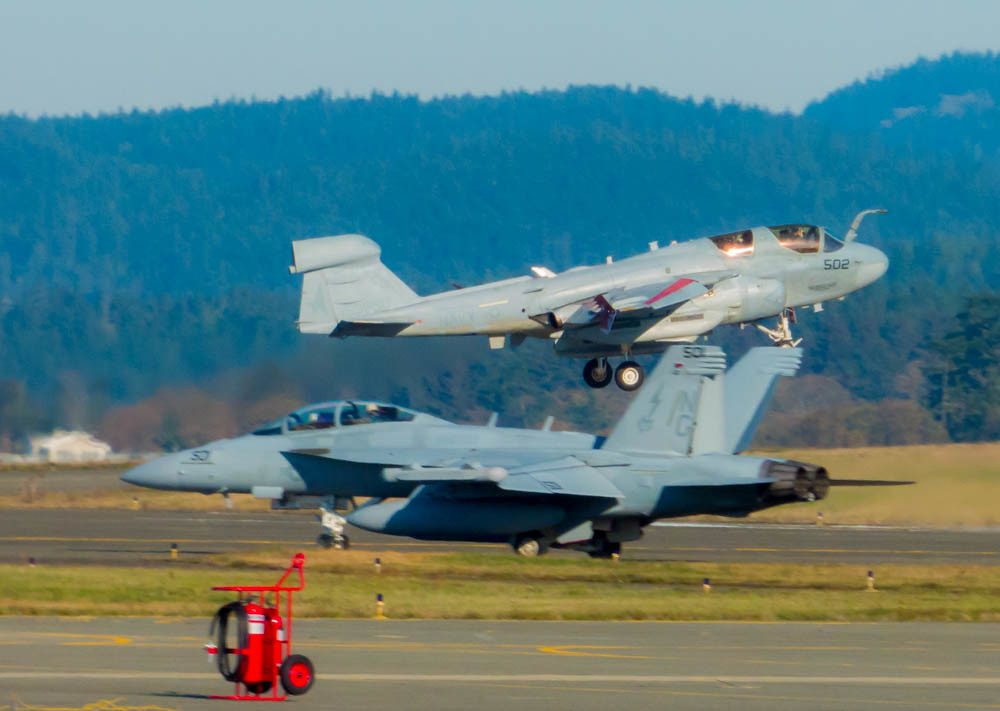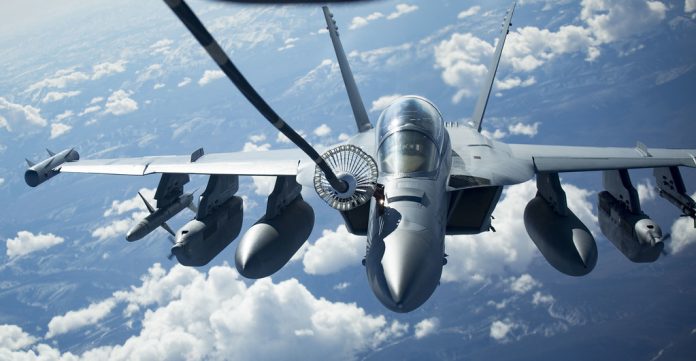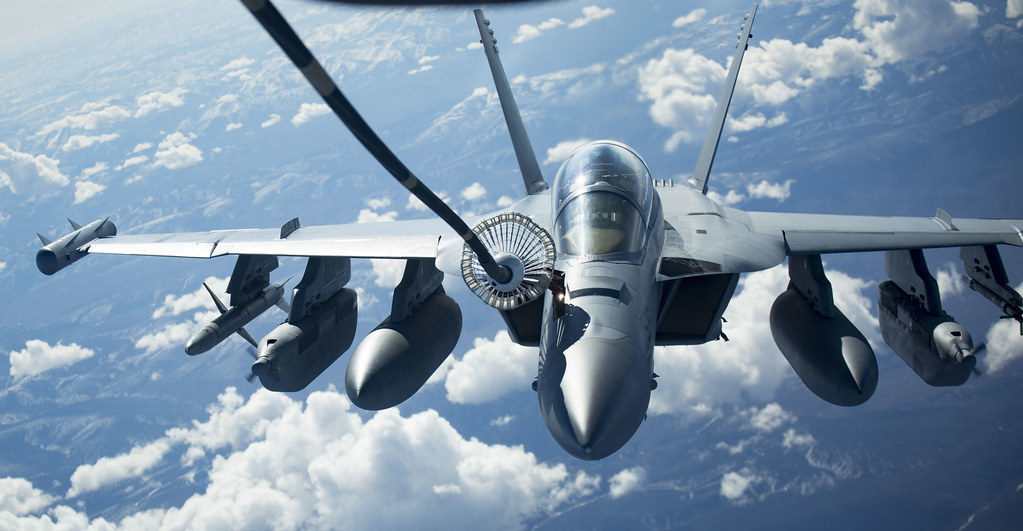
Here is a quote from a 2006 report by the Navy: “The Navy’s approach is to produce a new electronic attack aircraft based on the F/A-18F, called the EA-18G…The cost of procuring 90 EA-18G electronic attack variants is estimated at $9 billion…F/A-18F and EA-18G models are expected to be produced on the same production line starting in FY2008 and achieve initial operational capability (IOC) in September 2009. The EA-18G would share the F/A-18F’s airframe and avionics and be built on the same assembly line. The EA-18G would replace the F-model’s cannon with a nose-mounted jamming processor and carry up to five ALQ-99 jamming pods. These are the same jamming pods currently employed by the EA-6B. ”

Derived from the F/A-18F Super Hornet, the EA-18G Growler carries similar engines—General Electric augmented turbofans with 22,000 lb of thrust, and hence, comparable maximum speeds exceeding Mach 1.7. According to a military contractor, “The F-18 was the first US fighter capable of supersonic speeds without the use of afterburners.”

The F18G Growler jets are now boxy and noisy due to the new jamming pods. However, with increased turbulence, the F18G Growler may be less stable and crash-prone compared to the F18F.
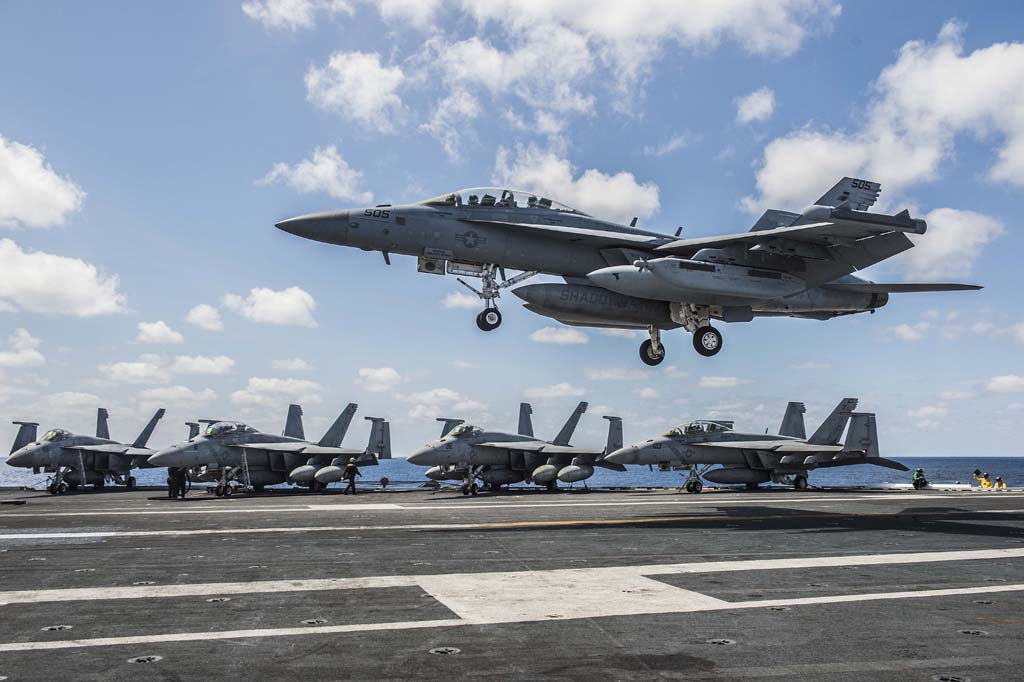
The EA-6B Prowler jets exhibited a much lower crash rate, with the Growler and similar F-18 variants experiencing crashes 10 to 36 times more often over the past decades.

The speed at which these jets travel—Growlers reaching up to 1200 miles per hour—compounded with design factors, has made them extremely difficult to control. Issues with the Super Hornet’s engines had surfaced during its development, including a “wing drop” problem during high-speed maneuvers, which likely translated into similar challenges for the Growler.
related images you might be interested.

